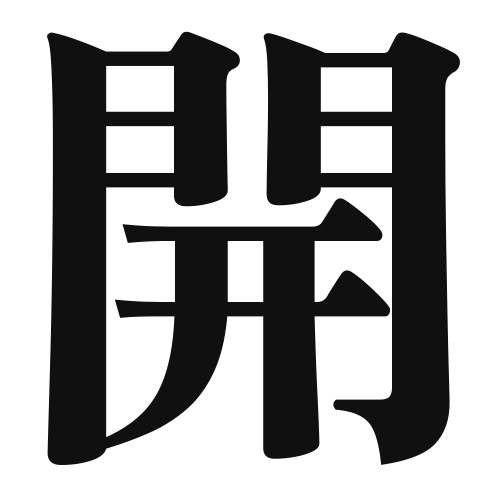1. Overview of Meaning
The kanji “開” (pronounced “kai” or “hiraku”) means “to open” or “to unfold.” It is commonly used to indicate the action of opening something, such as a door, a book, or even a new opportunity.
2. Formation and Radical
The kanji “開” is a compound character (会意文字) that combines elements to convey its meaning. It consists of the radical 門 (meaning “gate”) and the phonetic component 開, which together symbolize the action of opening a gate.
The radical 門 is significant as it relates to things that are enclosed or protected, emphasizing the act of opening something that was previously closed.
3. Examples of Usage
Common words and phrases that include “開” are:
- 開く (hiraku) – to open
- 開店 (kaiten) – opening a store
- 開発 (kaihatsu) – development
Example sentences in daily conversation:
- ドアを開けてください。 (Doa o akete kudasai.) – Please open the door.
- 新しいプロジェクトが開かれました。 (Atarashii purojekuto ga hirakaremashita.) – A new project has been opened.
4. Synonyms and Antonyms
Similar kanji with related meanings include:
- 解 (kai) – to solve or untie, which conveys a sense of opening in a different context.
Antonyms include:
- 閉 (he) – to close, which represents the opposite action of “opening.”
5. Cultural and Historical Background
The kanji “開” has significant ties to Japanese culture, often associated with new beginnings and opportunities. It is frequently used in contexts such as opening ceremonies and celebrations.
Proverbs and idiomatic expressions that include “開” are:
- 開けてびっくり (akete bikkuri) – “Open it and be surprised,” which refers to unexpected outcomes.
